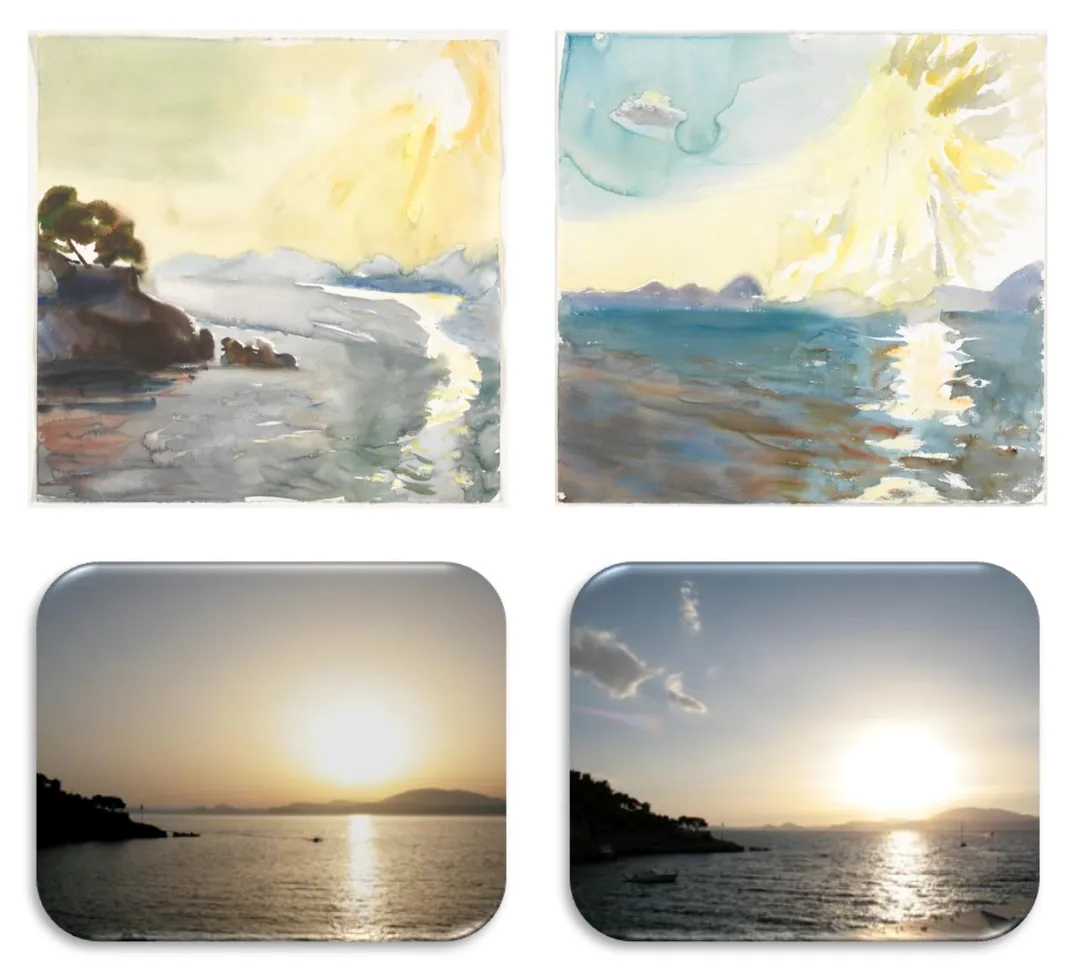How Paintings of Sunsets Immortalize Past Volcanic Eruptions
The balance of reds and greens reflects the amount of tiny particles in the atmosphere, scientists say
/https://tf-cmsv2-smithsonianmag-media.s3.amazonaws.com/filer/0c/f9/0cf93517-a588-48cb-a067-b5d0765e294d/turner_sunset_painting.jpg)
Volcanoes can cause some of the world’s most spectacular sunsets. An eruption spews small particles of gas, dust and ash, called aerosols, high into the atmosphere where they can spread around the world. The particles can’t be seen during the day, but about 15 minutes after sunset, when conditions are right, these aerosols can light up the sky in brilliant “afterglows” of pink, purple, red or orange.
For hundreds of years, such sights have sent artists scrambling for paint and canvas. But what, if anything, can those paintings tell us about the volcanic eruptions themselves?
Christos Zerefos of the Academy of Athens in Greece and colleagues are searching for answers to this question. In a paper published today in Atmospheric Chemistry and Physics, they postulate that the prevalence of warm hues dabbed in the paintings' skies may indicate the presence of volcanic ash and dust in the atmosphere when the artworks were created.
It may sound a bit far-fetched, but the researchers are not the first to make connections between volcanoes and art depicting sunsets. In 2004, for instance, Don Olson, an astronomer at Texas A&M University, connected the skies in Edvard Munch’s famous 1893 painting The Scream with the explosion of Krakatoa in 1883. But Munch wasn't the only artist to be inspired by volcano enhanced sunsets. There are hundreds more.
Back in 2007, Zerefos and his colleagues published a paper, also in Atmospheric Chemistry and Physics, setting forth their idea that the ratio of reds to greens in the sunsets of famous paintings was an accurate reflection of the amount of post-eruption aerosols in the atmosphere—the more red the sky was, the more likely the painting depicted a volcano-enhanced sunset. But they later realized there was a problem with their work: The team had based their analysis on images of the paintings that sat on museum websites. There was no guarantee that the colors in the images hadn’t been skewed in some way.
The researchers began their new study by analyzing a subset of their previous work—124 high-quality images from the Tate Gallery in London, mostly works by J.M.W. Turner. They then recalculated the red-to-green ratios of the sunsets in these works of art.
The paintings studied were created between 1500 and 2000. Scientists have found evidence of 54 highly explosive volcanic eruptions during this time period—eruptions that would certainly have injected material into the stratosphere where it would cause spectacular sunsets in the years immediately following.
Zerefos and his colleagues looked for changes in the red-to-green ratio of the paintings in those post-eruption years, and what they found confirmed their hypothesis. In the “volcanic” years—the year of the eruption and the three following years—the paintings had more red in their sunsets. That trend was seen even though there were many factors unrelated to atmospheric conditions that could influence the colors in a painting, such as the style of the painting and even the mood of the painter.
The team then used the work of a real artist, Greek colorist and landscape painter Panayiotis Tetsis as a proof-of-concept reality check. They couldn’t order up a volcanic eruption, but they did make use of a decent substitute—a cloud of dust from the Sahara. Though the dust particles aren’t an exact match for volcanic aerosols, they have a similar effect on sunsets.
From his home on Hydra, a Greek island 80 kilometers south of Athens inhabited by about 2,000 people, Tetis was instructed to make two paintings, one before and after sunset, on two days, June 19 and 20, 2010. No cars are allowed on the island, and it’s far enough away from Athens that particles of pollution from the big city don’t reach it to add colors to the otherwise natrual sunsets seen on the island. Unknown to Tetsis, a cloud of Saharan dust passed over Greece on the days he painted the sunsets.

The paintings were then transferred to the National Gallery in London where high-quality digital images were taken. Those images were compared with direct measurements taken of aerosols on Hydra on each of the two evenings. The red-to-green ratios in the paintings were related to the aerosol measurements—on June 19, when there were more dust particles in the sky, Tetsis had indeed used more red in his image.
So what does it mean, in the grand scheme of things, that artists' paintings of sunsets reveal a sky loaded with aerosols when the art was created? "Because of the large number of paintings studied, we tentatively propose the conclusion that regardless of the school, red-to-green ratios from great masters can provide independent proxy AODs [aerosol optical depths] that correlate with widely accepted proxies and with independent measurements," the researchers write.
In other words, paintings of sunsets may be able to actually inform science by providing clues to how dusty the air was when the artist took up his or her paintbrush. "Nature speaks to the hearts and souls of the artists," the researchers write. "When colouring sunsets the [red-to-green] ratios perceived by the brain contain important environmental information."
/https://tf-cmsv2-smithsonianmag-media.s3.amazonaws.com/accounts/headshot/Sarah-Zielinski-240.jpg)
/https://tf-cmsv2-smithsonianmag-media.s3.amazonaws.com/accounts/headshot/Sarah-Zielinski-240.jpg)